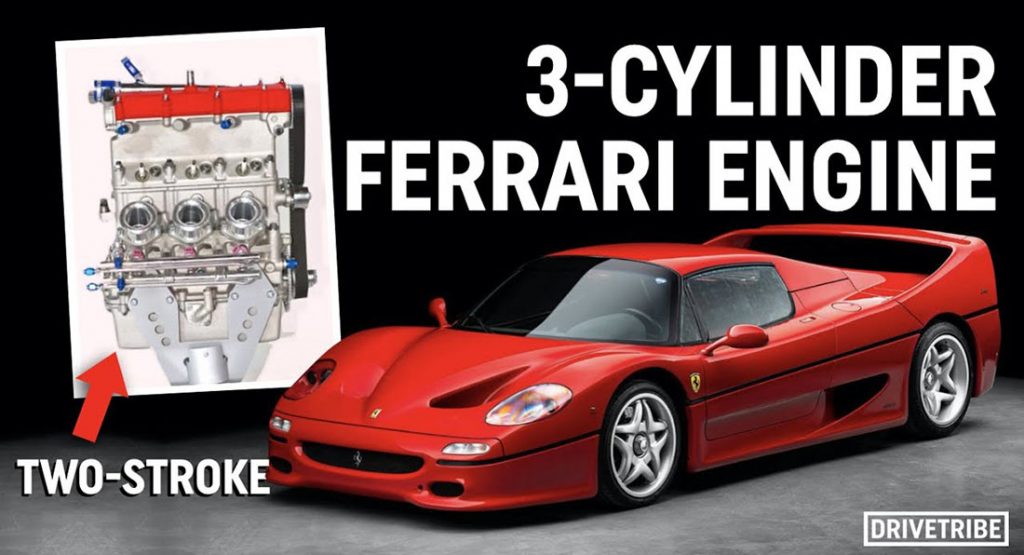If you’ve ever been to Ferrari’s Museum in Maranello, you may have come across an engine unlike any other from Ferrari’s history; a tiny, 1.3-liter three-cylinder two-stroke engine that is supercharged. Yes, a three-cylinder, nothing like the V8s and V12s which Ferrari builds exclusively nowadays for its road cars.
In this video from Drive Tribe, we discover that Ferrari built this compact three-cylinder back in the early 1990s as a test bed for a two-stroke six-cylinder. It figured that if it successfully developed a three-cylinder, it could essentially join two together to make a supercharged two-stroke V6.
Watch Also: Aston Martin Valkyrie’s V12 Was Spawned From A Three-Cylinder
Although two-stroke engines have largely fallen out of favor due to their inefficiency and narrow powerband, Ferrari’s was a little different. It used twin-port fuel injection rather than a carburetor like a normal two-stroke, as well as exhaust valves controlled by a camshaft. As for the supercharger, it helped to overcome some of the pitfalls of a two-stroke by pumping more air into the cylinders while also helping to flush out the exhaust gasses, increasing the efficiency of combustion.
It remains unclear just why this Ferrari engine never made it to production. The presenter believes that at the time, there wasn’t the right technology to ensure such an engine would be clean enough. It also wouldn’t have had enough power for a Ferrari as, in three-cylinder form, reportedly produced just 130 hp. However, it is claimed the Italian automaker did consider turbocharging it so it could deliver upwards of 216 hp, which would double to 432 hp as a six-cylinder.



